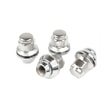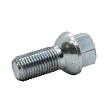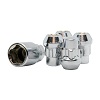How much does tire replacement cost in 2025?
Seasonal tire replacement isn't just about driving comfort, but above all, safety – for ourselves and other road users. Winter and summer tires differ in their rubber compound and tread pattern, making them better suited to specific weather conditions. Driving on the wrong tires can extend braking distances, reduce traction, and increase the risk of accidents. In 2025, the price of tire replacement will depend on many factors, such as wheel size, rim type, and additional services. In this article, we'll outline all the factors that influence the cost of tire replacement, along with approximate rates for popular sizes and tips on how to plan a tire visit to save money and avoid long waits.
Tire replacement cost – what does the price of the service depend on?

Tire type – standard, low profile, Run Flat
The cost of replacing a tire increases with the complexity of its maintenance. Low-profile tires (e.g., 45 or 50 profile) require precise installation because their lower sidewall height makes it easier to damage the rim. Run-flat tires, which allow continued driving after a puncture, have stiffer sidewalls and require specialized equipment. Similarly, C-type tires (used in vans) are more expensive to install due to their stiffer construction and greater weight .
Rim type and size – steel vs. aluminum
Steel rims are typically found on city cars, fleet vehicles, and vehicles where low operating costs are a priority. Their design allows for faster and less risky tire installation, and any minor deformations can often be repaired, further reducing operating costs.
Aluminum rims , on the other hand, are aesthetically pleasing and lighter, and can improve a car's handling. However, their installation requires greater precision. The delicate paintwork and polished rims are susceptible to scratching during tire installation, so tire fitters use special rollers, protective covers, or tire changers with an auxiliary arm.
The size of the rim also influences the price – with diameters above 17 inches, installation becomes more time-consuming, and the tire itself is heavier and less flexible. In the case of "deep concave" rims or models with very thin spokes, repair shops may charge an additional fee for difficult installation.
Vehicle type and workshop location
The vehicle type directly impacts the cost of tire replacement. Passenger cars with 14-16-inch rims are the cheapest segment, where the installation process is quick and requires no special tools. SUV and crossovers often use larger wheels (17-20 inches), and their weight and tire width require the use of stronger changers and additional support arms, which increases the time required. Commercial vehicles with C-type tires have stiffer sidewalls, making installation more difficult and requiring greater force. Premium vehicles also often have expensive, multi-spoke rims or TPMS sensor systems, which can also increase the cost of the service.
The location of a repair shop is another important factor. In large cities like Warsaw, Krakow, and Wroclaw, tire repair prices can be 20-40% higher than in smaller towns, due to higher operating costs, higher demand, and often longer queues during peak season. In smaller towns and rural areas, on the other hand, you can expect lower rates, but sometimes at the cost of longer wait times for an available appointment or less access to advanced equipment.
Seasonality and promotions in 2025
Tire replacement prices are heavily influenced by the season. During the peak season—spring (March-April) and fall (October-November)—repair shops are at full capacity, and appointments can be booked up weeks in advance. During this time, rates can be as much as 10-20% higher than off-season prices.
To avoid overpaying and long waits, it is worth considering:
- Change your tires earlier or later than most drivers – for example, as early as mid-March or late November, if weather conditions allow.
- Combining services – garages often offer discounts when you buy new tires from them when replacing tires or use additional services, such as tire storage.
- Using loyalty packages – some services will introduce subscriptions in 2025 that include two tire changes per year, balancing and tire condition checks at a fixed price.
- Track online promotions – booking sites and tire price comparison sites allow you to find garages with available dates and lower rates.
Inflation and rising labor costs in 2025 mean that average automotive service prices will increase by 3-7% annually, making it even more important to plan your replacement in advance than in previous years.
How much will it cost to replace 17-, 16-, and 15-inch tires in 2025? – Sample price list
Approximate prices for steel rims (including mounting and balancing)
- 15 inches: PLN 100-140 per set
- 16 inches: PLN 120-160 per set
- 17 inches: PLN 140-180 per set
The rates quoted include installation and balancing, but may vary depending on location and workshop reputation.
Approximate prices for aluminum rims (including mounting and balancing)
- 15 inches: PLN 120-160 per set
- 16 inches: PLN 140-180 per set
- 17 inches: PLN 160-220 per set
The higher price is due to the greater care required during installation and the often larger diameter of the rims.
Is replacing larger tires more expensive? – Size and profile vs. price
The influence of rim diameter on the price of the service
The increase in rim diameter impacts every step of the tire change process. 18- to 20-inch wheels are heavier, less flexible, and more difficult to seat correctly on the tire changer. They also require greater torque during removal, which can increase the mechanic's time. Furthermore, the risk of rim damage increases—especially with polished or complex rims.
In 2025, the approximate cost increase compared to 16-inch rims is:
- +20–30 PLN for 18-inch rims,
- +40–60 PLN for 19-inch rims,
- +60–100 PLN for rims 20 inches and larger.
Low Profile and Run Flat Tires – Additional Challenges and Costs
Low-profile tires (40, 35, or lower profile) and run-flat tires have stiffer sidewalls, making them more difficult to install and remove. Replacement requires specialized adapters, an auxiliary arm, and protective covers on the tire changer. Improper handling can result in tire or rim damage, so not every workshop will perform this type of installation.
The average cost of replacing Run Flat or low profile tires in 2025 is higher by:
- +40–60 PLN for a set on steel rims,
- +60–100 PLN for a set on aluminum rims.
💡 Tip: If you're planning to buy larger rims or run-flat tires, check price lists at local garages beforehand. Some shops specializing in premium tire service offer fixed prices with no surcharges, which can mean real savings over the course of a year.
Tire replacement with balancing – price of this and other additional services
Wheel balancing – why is it necessary and how much does it cost?
Wheel balancing is a process in which a special balancer is used to check the even weight distribution between the wheel and tire. Even a slight deviation can cause steering wheel vibration at certain speeds and, in the long run, lead to:
- accelerated tread wear
- greater load on suspension elements
- deterioration of grip and driving comfort
Balancing is essential after every tire change, as simply changing the tire's position relative to the rim or differences in its design can cause imbalance. Modern workshops use electronic wheel balancers with a rim runout diagnostic function, allowing for precise weight selection and avoiding problems while driving.
Additional services – what else can affect the final bill?
- Tire repair (mushroom, patch): PLN 40–80
- Tire storage: PLN 80–150/season
- Nitrogen inflation: 5–15 PLN/wheel
- Valve replacement: 5–10 PLN/pcs.
- Replacing a wheel stud: PLN 20–50 + labor
- Wheel washing: 5–15 PLN/pcs.
How long does it take to change tires? – Service time
Factors influencing the duration of service
The timing of tire replacement depends on several key elements:
- Type of rims – steel rims are easier to handle and usually reduce installation time, while aluminum rims require more care.
- Tire type – Low profile and Run Flat tires lengthen the process because their installation is more demanding.
- Number of wheels – standard replacement includes a set of four wheels, but in the case of commercial vehicles there may be more.
- Scope of service – if the replacement only includes wheel rotation (tires are already mounted on rims), the time is shorter than when removing tires and installing new ones.
- Additional services – tire repair, valve replacement, wheel washing or nitrogen inflation – extend the delivery time.
- Work organization in the workshop – number of available stations and mechanics, as well as current occupancy.
- Seasonal period – in spring and autumn, during peak exchanges, the waiting time for the service can range from several dozen minutes to even several days.
Approximate tire change times for various scenarios
- Wheel replacement (tires already on rims): 15–30 min
- Tire replacement with steel rims: 30–45 min
- Tire change on aluminum rims: 45–60 min (longer for large/low profile/Run Flat)
In 2025, the cost of replacing tires in Poland will range from around 100 PLN for 15-inch steel rims to as much as 250 PLN for large aluminum rims and run-flat tires. Choosing an off-season date, checking offers from several garages, and taking advantage of promotions will help reduce costs and wait times. Regular tire changes are an investment in safety—both for you and your passengers.

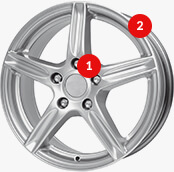

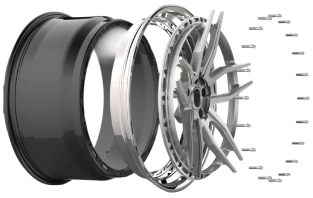
 Modern design
Modern design Perfect fit
Perfect fit High durability
High durability Free shipping within 24 hours
Free shipping within 24 hours
 Individual project
Individual project Dedicated caregiver
Dedicated caregiver
